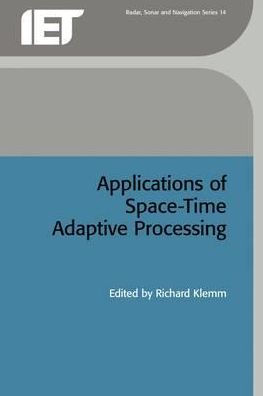5
1
9780852969243


Applications of Space-Time Adaptive Processing available in Hardcover

Applications of Space-Time Adaptive Processing
- ISBN-10:
- 0852969244
- ISBN-13:
- 9780852969243
- Pub. Date:
- 08/13/2004
- Publisher:
- The Institution of Engineering and Technology
- ISBN-10:
- 0852969244
- ISBN-13:
- 9780852969243
- Pub. Date:
- 08/13/2004
- Publisher:
- The Institution of Engineering and Technology
180.0
In Stock

Product Details
| ISBN-13: | 9780852969243 |
|---|---|
| Publisher: | The Institution of Engineering and Technology |
| Publication date: | 08/13/2004 |
| Series: | Radar, Sonar and Navigation |
| Pages: | 956 |
| Product dimensions: | 6.50(w) x 9.30(h) x 2.30(d) |
About the Author
From the B&N Reads Blog
